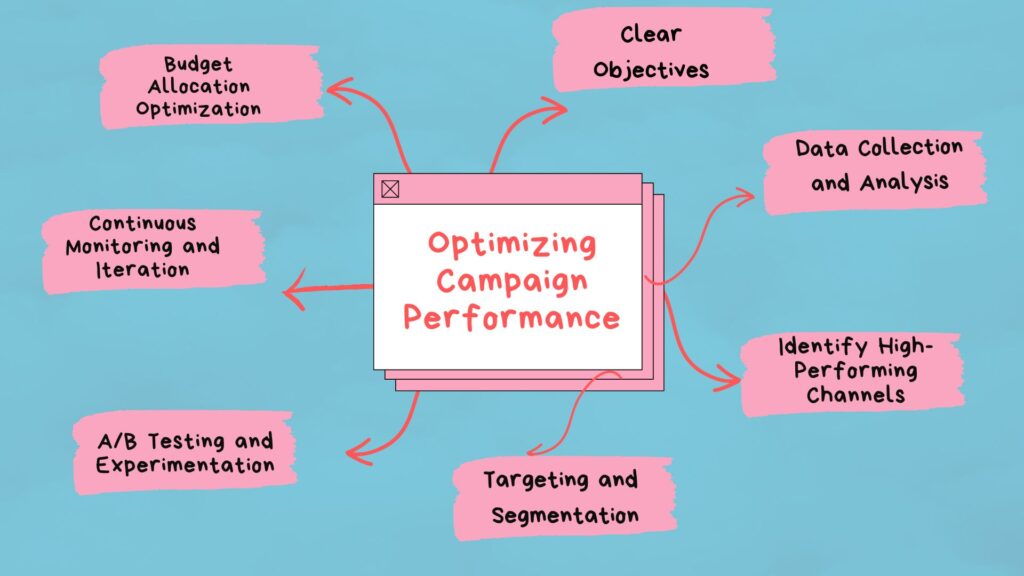In today’s dynamic and interconnected digital landscape, effective marketing isn’t just about reaching customers through a single channel—it’s about engaging them across multiple touchpoints to create a seamless and personalized experience. This approach, known as cross-channel marketing, has become vital for companies trying to maintain their competitiveness and relevance in an increasingly saturated market.
However, executing a successful cross-channel marketing strategy is a significant feat. With consumers engaging with companies over a range of channels, including websites, email, social media, mobile apps, and more, the challenge lies in harnessing the vast amount of data generated across these channels to derive actionable insights. We’ll discover how analytics can be your ultimate advantage in navigating the complex landscape of cross-channel marketing.
Determining Analytics for Cross-Channel Marketing:
Cross-channel marketing analytics involves a comprehensive approach to collecting and examining information from several sources to get an understanding of customer behavior, preferences, and interactions across different channels. Determining the right analytics for cross-channel marketing requires careful consideration of critical metrics, data sources, and analytical techniques to measure and optimize marketing efforts effectively. Here’s a breakdown of the essential components involved:
Critical Metrics Selection:
Determine which indicators are most pertinent to your marketing goals and KPIs. These might consist of:
Data Integration:Integrate data from multiple channels and sources, including:
Attribution Modeling: Implement attribution models to accurately attribute conversions and sales to the appropriate channels and touchpoints along the customer journey. Standard attribution models include:
Visualization and Reporting: Present data and insights in a clear and actionable format through visualization tools and dashboards. This allows stakeholders to understand performance metrics and make informed decisions quickly. Popular visualization tools include:

Optimizing Campaign Performance:
Here’s a step-by-step approach to optimizing campaign performance using analytics:
Clear Objectives: Define specific goals for campaigns such as brand awareness, website traffic, leads, or sales to guide optimization efforts effectively.
Data Collection and Analysis: Gather data from various channels and sources, including website analytics, social media, email, and advertising platforms. Analyze metrics like click-through rates, conversion rates, and ROI to assess campaign effectiveness.
Identify High-Performing Channels: Use attribution modeling to determine which channels contribute most to conversions. Allocate budget and resources to channels driving the highest ROI.
Targeting and Segmentation: Segment the audience based on demographics, behavior, and interests. Utilize predictive modeling to identify high-value segments and tailor messaging accordingly.
A/B Testing and Experimentation: Test different campaign variations, such as ad creatives and landing pages, to identify what resonates best with the audience. Analyze results to optimize campaign elements.
Continuous Monitoring and Iteration: Monitor campaign performance in real-time and regularly review analytics data to identify optimization opportunities. Make data-driven decisions to refine campaigns and improve performance.
Budget Allocation Optimization: Allocate the marketing budget based on channel performance and ROI. Shift resources towards high-performing channels and tactics while reducing investment in underperforming ones.
Predictive Analytics and Future Trends:
Introduction to Predictive Analytics: Predictive analytics is a robust methodology that leverages historical data, statistical algorithms, and machine-learning techniques to forecast future outcomes and trends.
Applications of Predictive Analytics in Marketing: There are several uses for predictive analytics in marketing, including predicting customer behavior and preferences, forecasting sales and revenue, identifying high-value customer segments, personalizing marketing messages and offers, and optimizing advertising and campaign strategies.
Benefits of Predictive Analytics: The utilization of predictive analytics in marketing offers several key benefits, including improved decision-making based on data-driven insights, enhanced targeting and segmentation for more effective campaigns,
Challenges and Considerations: Despite its potential benefits, implementing predictive analytics in marketing comes with its own set of challenges and considerations.
Future Trends in Predictive Analytics: New developments and trends that are reshaping the field of data-driven decision-making will define the future of predictive analytics in marketing.
Case Studies and Examples: Predictive analytics is a powerful tool for achieving marketing success, as demonstrated by case studies and real-world examples.
Bringing Consumer Interactions Across Channels Into One Unified View:
In today’s omnichannel marketing landscape, A wide range of touchpoints, including websites, social media, email, mobile applications, and physical storefronts, are used by customers to connect with companies. Establishing a common understanding of client interactions across these channels is essential for delivering personalized and seamless experiences. In this subtopic, we’ll explore strategies and technologies for integrating data from various channels to build a comprehensive grasp of the tastes and behavior of your customers. We’ll discuss the benefits of a unified view, challenges to overcome, and best practices for implementing a cohesive omnichannel strategy.
Conclusion:
Cross-channel marketing analytics is a potent instrument for contemporary companies looking to prosper in the fiercely competitive and quickly changing digital market of today. We have been delving into the nuances of cross-channel marketing analytics in this blog, from grasping its foundational ideas to identifying its useful applications and advantages.
To sum up, cross-channel marketing analytics is a game-changer in contemporary marketing, helping companies to gain deeper understanding, produce better results, and provide more meaningful client experiences. In an increasingly connected world, businesses can position themselves for success by utilizing this potent tool and embracing a data-driven mindset.
FAQ’s
Cross-channel analytics: what is it?
Cross-Channel Analytics: In order to measure performance, comprehend customer behavior, and maximize marketing efforts, cross-channel analytics entails gathering, evaluating, and interpreting data from various marketing channels. To obtain a full perspective across several touchpoints, it entails combining data from multiple sources, including websites, social media platforms, email campaigns, mobile apps, and physical channels.
In marketing, what does cross-channel mean?
Cross-channel marketing is the process of connecting with and interacting with consumers across a variety of online and physical touchpoints and channels. Channels including websites, email, social media, mobile applications, search engines, brick-and-mortar businesses, direct mail, and more are included in this.
Multichannel marketing analytics: what is it?
To assess the success of marketing campaigns, comprehend consumer behavior, and improve marketing tactics, multichannel marketing analytics entails examining data and performance indicators across several marketing channels. It emphasizes on evaluating and contrasting the effectiveness of various channels, seeing patterns and trends within them, and linking particular marketing initiatives to sales and conversions.
What does a cross-channel look like?
A customer discovers a product through a social media ad, visits the brand’s website to learn more, signs up for an email newsletter, receives promotional emails with personalized recommendations, visits a physical store to make a purchase, and later engages with the brand on social media to share their experience.
Why is cross-channel marketing employed?
Enhanced Customer Experience: Cross-channel marketing enables brands to provide a seamless and cohesive customer experience across different channels and touchpoints, resulting in improved satisfaction and loyalty.
Increased Reach and Engagement: By leveraging multiple channels, brands can reach customers wherever they are and engage them through their preferred channels, increasing brand visibility and interaction opportunities.
Better Insights and Optimization: Analyzing data from multiple channels allows marketers to gain a holistic view of the customer journey, identify trends and patterns, and optimize marketing strategies and campaigns based on data-driven insights.

